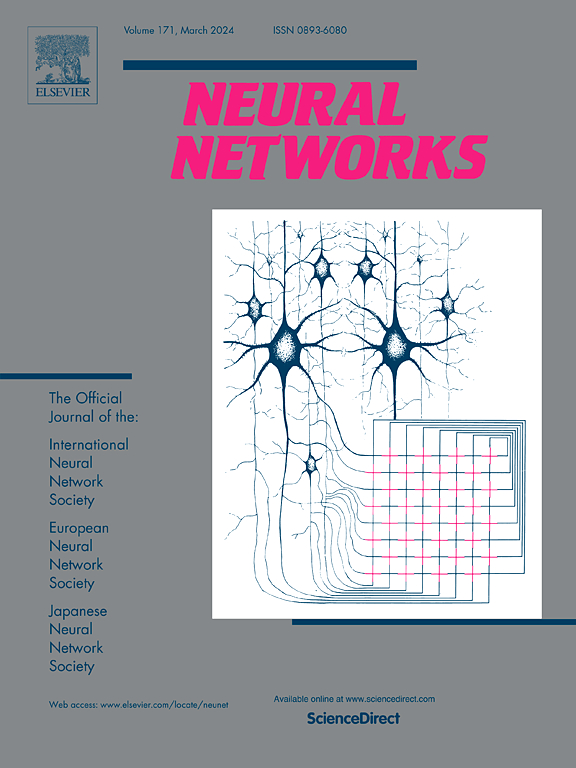Foster noisy label learning by exploiting noise-induced distortion in foreground localization
IF 6
1区 计算机科学
Q1 COMPUTER SCIENCE, ARTIFICIAL INTELLIGENCE
引用次数: 0
Abstract
Large-scale, well-annotated datasets are crucial for training deep neural networks. However, the prevalence of noisy-labeled samples can cause irreversible impairment to the generalization of models. Existing approaches have attempted to mitigate the impact of noisy labels by exploiting the different loss or confidence distributions between clean and noisy data to detect and correct noisy labels. This paper investigates the noise-induced distorting effect on foreground localization by tracking the model’s spatial attention distribution on visual activation maps. We observe that in clean samples, highly responsive regions usually focus on label-relevant foreground regions, whereas in noisy data, the model accidentally attends to uninformative background regions or cluttered object edges due to interference from label noise. Inspired by the observations, we propose a novel two-stage foreground localization-augmented noisy label learning framework named FLSC to concurrently boost the accuracy of sample selection and label correction for robust training. Specifically, FLSC first quantifies noise-induced distortion in foreground localization to foster conventional loss-based selection criteria by calculating the information reduction when deriving the foreground images from the original images based on the attention distribution. Next, we propose a noise-adaptive adversarial erasing strategy, which suppresses background activation by imposing adaptive erasure regularization, to eliminate overfitting to noisy samples while enhancing the learning of robust representations. To the best of our knowledge, it is the first attempt to exploit localization quality evaluation based on feature activation to address the label noise problem. Extensive experiments on synthetic and real-world datasets validate the superior performance of FLSC compared to state-of-the-art methods.
通过在前景定位中利用噪声引起的失真来培养噪声标签学习
大规模、注释良好的数据集对于训练深度神经网络至关重要。然而,噪声标记样本的普遍存在会对模型的泛化造成不可逆转的损害。现有的方法试图通过利用干净数据和噪声数据之间的不同损失或置信度分布来检测和纠正噪声标签,从而减轻噪声标签的影响。本文通过跟踪模型在视觉激活图上的空间注意分布,研究了噪声引起的失真对前景定位的影响。我们观察到,在干净的样本中,高响应区域通常关注与标签相关的前景区域,而在有噪声的数据中,由于标签噪声的干扰,模型意外地关注无信息的背景区域或杂乱的物体边缘。受观察结果的启发,我们提出了一种新的两阶段前景定位增强噪声标签学习框架FLSC,以同时提高鲁棒训练中样本选择和标签校正的准确性。具体而言,FLSC首先量化前景定位中的噪声引起的失真,通过计算基于注意力分布从原始图像中提取前景图像时的信息降维,形成传统的基于损失的选择准则。接下来,我们提出了一种噪声自适应对抗擦除策略,该策略通过施加自适应擦除正则化来抑制背景激活,以消除对噪声样本的过拟合,同时增强对鲁棒表示的学习。据我们所知,这是第一次尝试利用基于特征激活的定位质量评估来解决标签噪声问题。在合成数据集和实际数据集上进行的大量实验验证了FLSC与最先进的方法相比的优越性能。
本文章由计算机程序翻译,如有差异,请以英文原文为准。
求助全文
约1分钟内获得全文
求助全文
来源期刊

Neural Networks
工程技术-计算机:人工智能
CiteScore
13.90
自引率
7.70%
发文量
425
审稿时长
67 days
期刊介绍:
Neural Networks is a platform that aims to foster an international community of scholars and practitioners interested in neural networks, deep learning, and other approaches to artificial intelligence and machine learning. Our journal invites submissions covering various aspects of neural networks research, from computational neuroscience and cognitive modeling to mathematical analyses and engineering applications. By providing a forum for interdisciplinary discussions between biology and technology, we aim to encourage the development of biologically-inspired artificial intelligence.
 求助内容:
求助内容: 应助结果提醒方式:
应助结果提醒方式:


